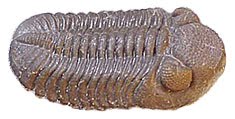Adventures on Earth column for the December 22 edition of The Review
By George E. Beetham Jr.
Gold is one of the most fascinating minerals on Planet Earth, but the gold we mine was not here when the planet formed.
A study recently published in the research journal Science claims that the gold we find on Earth probably came from the crash of a large body, perhaps even a small planet, with Earth long after it formed.
Gold is often found in conjunction with iron. The Earth’s core is made of iron. All the gold that may have formed as the planet organized would have sunk into the core along with the iron.
But gold arriving via a crashing body from space would not necessarily have settled into the core. Assuming the body from space was large enough to bring a lot of gold to the planet, it could not have been so large that it would have melted down to the core.
Instead the gold that piggybacked its way here settled into the mantle, the region of viscous rock that churns and drives the continents around the planet.
Gold is found at the surface in conjunction with rocks formed of magma or rocks that have metamorphosed.
Gold can be expelled from volcanic vents, or it can be carried by liquid water that eventually forms quartz.
By far, the most common form of gold is found in veins of quartz. When the quartz fractures apart and weathers away gold nuggets and flakes are washed into stream where it can be panned or extracted by hydraulic or mechanical means.
But large mining companies tunnel into quartz veins, breaking up the rock. The ore is processed to extract the gold.
The Earth is estimated to be about 4.5 billion years old. Any gold that came to Earth during that time would have settled into the core.
Researchers estimate that the gold that formed in the mantle came from the collision with a large space rock tens of millions of years later.
Otherwise, we would not have been able to find gold at the surface, or in rocks reachable by mining. It is estimated that we have recovered some 165,000 tons of gold.
Gold is prized for its beauty, but it has a practical property as well. Gold does not oxidize, or corrode. It does not react to acid, which provides the standard test geologist use to prove it is gold.
Gold is valued in jewelry, coinage, and industrial uses. Gold is used in electronics, medicine, and chemistry.
Despite the fact that it does not react to the body, gold flakes have been used in drinks and gourmet foods. Although some people historically thought gold was good for humans, it has no nutritional value and passes through the system without any effect.
Gold remains a measure of wealth and in recent years people have been investing in gold, driving up the price.
Gold in its own right is fascinating, but the way it arrived on the planet makes it even more fascinating.
To paraphrase Mark Twain, buy gold; they’re not making any more. What we have is all we’ll get, unless another large body gets air mailed from space. That would bring more gold, but likely wipe out the creatures that value it.

No comments:
Post a Comment